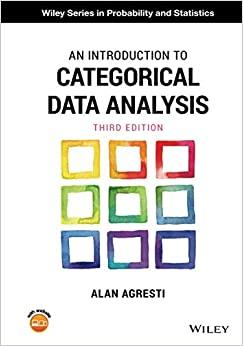The output in Table 6.11 shows sequential-logit modeling of data from a developmental toxicity study.14 Rodent studies
Question:
The output in Table 6.11 shows sequential-logit modeling of data from a developmental toxicity study.14 Rodent studies are commonly used to test and regulate substances posing a potential danger to developing fetuses. This study administered diethylene Table 6.11 Software output for the toxicity study of Exercise 6.17.
---------------------------------–--------------------------------------------
> Toxicity # data file at text website concentration dead malformation normal 0.0 15 1 281 2 62.5 17 0 225 3 125.0 22 7 283 4 250.0 38 59 202 5 500.0 144 132 9
> fit <- vglm(cbind(dead,malformation,normal) ~ concentration, family=sratio,
+ data=Toxicity) # using function in VGAM library
> summary(fit)
Estimate Std. Error z value Pr(>|z|)
(Intercept):1 -3.24793 0.15766 -20.60 <2e-16
(Intercept):2 -5.70190 0.33065 -17.24 <2e-16 concentration:1 0.00639 0.00043 14.70 <2e-16 concentration:2 0.01737 0.00121 14.33 <2e-16
---
Names of linear predictors: logit(P[Y=1|Y>=1]), logit(P[Y=2|Y>=2])
Residual deviance: 11.8384 on 6 degrees of freedom
---------------------------------–-------------------
glycol dimethyl ether, an industrial solvent used in the manufacture of protective coatings, to pregnant mice. Each mouse was exposed to one of five concentration levels for ten days early in the pregnancy. Two days later, the uterine contents of the pregnant mice were examined for defects. Each fetus had the three possible outcomes (dead, malformation, normal). The outcomes are ordered. Prepare a short report that summarizes information from these analyses.
Step by Step Answer:






